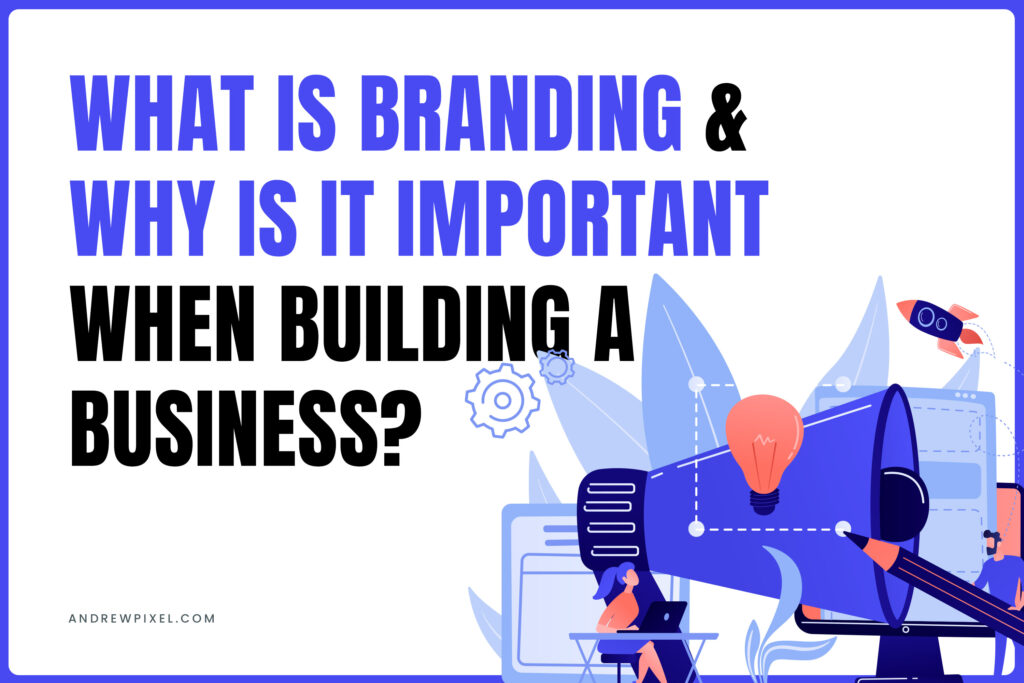
What is branding?
Branding is the practice of creating a name, symbol, or design identifying a person or company. It is often used to identify the company or its values. It can be the overall representation of the company’s mission, values, story, attitude, messaging, aesthetic, and style, as it is perceived by others.
Why is it important?
Branding is one way to set yourself apart from others who are in the same field. You want to stand out from the crowd by showing that you’re different, you have values, you hold certain beliefs, or have specific habits that make a good impression on others.
Branding yourself or your company doesn’t have to be difficult, you can start simply by creating a brand board and working from there.
Definition of a brand board
A brand board is a place with all of the elements of your brand; your logo, your colors, fonts, artwork, and ideas all in one place. You visualize how you want it to look and then create it on paper or electronically. You may want to add images, textures, or other elements to tell your story.
Your brand board contains all of these elements for you to refer back to anytime you want to add new elements or features. If you’re familiar with Pinterest at all you’ll understand the “board” reference. You create a board, or place to keep all of your inspiration, ideas, and designs.
What Does it Take to Have a Great Brand Board?
A great brand board is one that consistently captures your brand’s unique style and visual identity. A brand board should include:
- Your main logo
- Your color palette
- Variations of your logo
- Images
How a Brand Board Saves You Time
A brand board takes the place of your sticky notes when it comes to saving ideas. You can jot down your marketing ideas, add images or icons to inspire you, anything that you can look at say, “That’s me.” If you like the color purple and your favorite animal is a horse, you’ll find images of horses that reflect your feelings of freedom, independence, and wildness.
Another way a board can save you time is to delegate tasks to partners like graphics, text, and photos. If you have already decided on colors and designs then you’ll have an easier time putting everything together when everyone collaborates and works together.
How a Brand Board Helps Your Business
If your ideal customers have values and interests that are the same as yours, creating a brand to unify that interest in a visual way is great for connecting with people who are like-minded. An image speaks to people on a subconscious level, you can make a statement without having to say one word.
Your brand should reflect your personality, your desires, your mission or goals, and how your business makes that happen. Your business should solve a problem that your target audience is having. Therefore your images and logo should be something related to what your business or service is.
When creating your board, make sure your theme is consistent. Your lettering should be the same on every page, your colors should stay within the same color range, and etc. You can use a template to make it easier and save it for the next board you make.
When going through images and colors it will be easy to spot what goes with your color scheme and what doesn’t. Keeping consistency in your brand makes it easy to add new elements and update old ones.
How to Design Your Own Brand Board in Less Than 15 Minutes
Designing and creating a brand board can take as little as 15 minutes. You don’t have to be a designer or have artistic skills to create a brand board. Start from scratch and begin gathering all the elements you want to add to your board. You can add images, designs, artwork, drawings, colors, textures, and more.
1. Logo – your design, an image that represents you and your business
2. Logo variations – variations of your logo design, different colors, etc.
3. Submark – a simplified version of your logo like a watermark, social media profile photos, etc.
4. Color palette – the specific colors and unique color scheme to differentiate your business and brand; can be broken down into a primary color palette and a secondary color palette; usually includes each color’s hex codes
5. Fonts – the size and style of lettering used across all of your communication on social media and on your website.
6. Patterns and textures – decorative designs that give your brand some depth and bring your brand to life
7. Images for inspiration – typically include colors from your color palette.
Branding sets your business apart from other services that do the same thing. Your brand is a reflection of you, your beliefs, values, and inspirations. Your brand is an electronic representation of your business and what it stands for. Let your light shine in the world.

Looking to create your own brand board?
Check out this “Olivia Brand Boards” Collection with 25 editable Canva & Illustrator templates. Try out the demo here